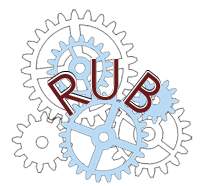Proszę używać tego identyfikatora do cytowań lub wstaw link do tej pozycji:
http://hdl.handle.net/11320/19075Pełny rekord metadanych
| Pole DC | Wartość | Język |
|---|---|---|
| dc.contributor.author | Kowalczyk, Małgorzata H. | - |
| dc.date.accessioned | 2025-10-20T11:27:11Z | - |
| dc.date.available | 2025-10-20T11:27:11Z | - |
| dc.date.issued | 2021 | - |
| dc.identifier.citation | Resocjalizacja Polska Nr 22, 2021, s. 255-271 | pl |
| dc.identifier.issn | 2081-3767 | - |
| dc.identifier.uri | http://hdl.handle.net/11320/19075 | - |
| dc.description.abstract | Podejście salutogeniczne jest jednym z wiodących sposobów myślenia o resocjalizacji. Kładzie nacisk na podmiotowość osób uczestniczących w procesie resocjalizacji. Nadrzędnym celem interwencji resocjalizacyjnych jest wspomaganie zmian jakie w sposób naturalny dokonują się w życiu jednostki, koncentrując się na posiadanych przez nią potencjałach. Podejście to znajduje odzwierciedlenie w różnych koncepcjach teoretycznych popartych praktyką jak i postulowanych kierunkach interwencji resocjalizacyjnych. Jest to podejście znane także w polskiej myśli resocjalizacyjnej. Celem niniejszego teoretycznego opracowania było omówienie najważniejszych koncepcji resocjalizacji odwołujących się do tej właśnie perspektywy. Zaprezentowane zostały najbardziej znane i poparte badaniami koncepcje: twórczej resocjalizacji, wieloczynnikowego modelu gotowości sprawców oraz model dobrego życia. Wspomniane koncepcje dają możliwość niekonwencjonalnego traktowania oddziaływań resocjalizacyjnych, indywidualnego podejścia do każdej osoby wymagającej interwencji resocjalizacyjnych lub terapeutycznych i mogą być inspiracją przy projektowaniu oddziaływań wobec najtrudniejszych kategorii sprawców przestępstw. | pl |
| dc.description.abstract | The salutogenic approach is one of the leading ways of thinking about rehabilitation. It emphasizes the subjectivity of people participating in the rehabilitation process. The overriding aim of social rehabilitation interventions is to support changes that naturally occur in an individual’s life, focusing on their potentials. This approach is reflected in various theoetical concepts supported by practice and the postulated directions of social rehabilitation interventions. This approach is also known in Polish rehabilitation thought. The aim of this theoretical study was to discuss the most important concepts of social rehabilitation referring to this perspective. The most famous concepts supported by research were presented: creative rehabilitation, multifactorial offenders readiness model and the model of a good life. The mentioned concepts give the possibility of unconventional treatment of social rehabilitation interactions, an individual approach to each person requiring social rehabilitation or therapeutic interventions, and may be an inspiration when designing interactions with the most difficult categories of offenders. | pl |
| dc.language.iso | pl | pl |
| dc.publisher | Fundacja Pedagogium | pl |
| dc.rights | Licencja Creative Commons Uznanie autorstwa 4.0 (CC-BY) | pl |
| dc.rights.uri | https://creativecommons.org/licenses/by/4.0/ | - |
| dc.subject | podejście salutogeniczne | pl |
| dc.subject | postępowanie ergotropowe | pl |
| dc.subject | twórcza resocjalizacja | pl |
| dc.subject | wieloczynnikowy model gotowości sprawcy | pl |
| dc.subject | model dobrego życia | pl |
| dc.subject | salutogenic approach | pl |
| dc.subject | ergotropic treatment | pl |
| dc.subject | ergotropic treatment | pl |
| dc.subject | multifactorial offender readiness model | pl |
| dc.subject | good life model | pl |
| dc.title | Podejście salutogeniczne w resocjalizacji. Przegląd koncepcji | pl |
| dc.title.alternative | The salutogenic approach in social rehabilitation. Concept review | pl |
| dc.type | Article | pl |
| dc.rights.holder | Licencja Creative Commons Uznanie autorstwa 4.0 (CC-BY) | pl |
| dc.identifier.doi | 10.22432/pjsr.2021.22.15 | - |
| dc.description.Affiliation | Uniwersytet Mikołaja Kopernika w Toruniu | pl |
| dc.description.references | Andrews D.A., Bonta J., 2006, The psychology of criminal conduct (4th ed.), Anderson Publishing, Cincinnati, OH. | pl |
| dc.description.references | Bandura A., Locke E.A., 2003, Negative self-efficacy and goal effects re-visited, „Journal of Applied Psychology”, nr 88. | pl |
| dc.description.references | Bonta J., Andrews D.A., 2010, Viewing offender assessment and rehabilitation through the lens of the risk-need-responsivity model, [w:] Offender Supervision: New Directions in Theory, Research and Practice (red) F. McNeill, P. Raynor, C. Trotter, Willan Publishing, Oxon, UK. | pl |
| dc.description.references | Czapów Cz., 1978, Wychowanie resocjalizujące, PWN, Warszawa. | pl |
| dc.description.references | Day A., Casey S., Ward T., Howells K., Vess J., 2010, Transitions to Better Life. Offender readiness and rehabilitation, Willan Publishing, Davon UK. | pl |
| dc.description.references | Hanson R.K., Morton-Bourgon K.E., 2005, The characteristics of persistent sexual offenders: A meta-analysis of recidivism studies, „Journal of Consulting and Clinical Psychology”, nr 73. | pl |
| dc.description.references | Heszen I., Sęk H., 2007, Psychologia zdrowia, Wydawnictwo Naukowe PWN, Warszawa. | pl |
| dc.description.references | Howells K., Day A., 2002, Readiness for anger management: Clinical and theoretical issues, „Clinical Psychology Review”, nr 23. | pl |
| dc.description.references | Konopczyński M., 2006, Metody twórczej resocjalizacji, Pedagogium, Wydawnictwo Naukowe PWN, Warszawa. | pl |
| dc.description.references | Rubacha K., 2016, Metodologia badań nad edukacją, WAiP, Warszawa. | pl |
| dc.description.references | Willis G., Ward T., 2013, The good lives model: Evidence that it works,[ w:] What Works in Offender Rehabilitation: An evidence based approach to assessment and Treatment, (red.) L. Craig, L. Dixon, T. A. Gannon, John Wiley & Sons, West Sussex, UK. | pl |
| dc.description.references | Ward T., Day A., Howells K., Birgden A.,2004, The multifactor offender readiness model, „Agression and Violent Behavior”, nr 9. | pl |
| dc.description.references | Ward T. Heffernan R., 2017, A comprehensive theory of dynamic risk and protective factors, „Aggression and Violent Behavior”, nr 37. | pl |
| dc.description.references | Ward T., Hudson S.M., 1998, A model of the relapse process in sexual offenders. „Journal of Interpersonal Violence”, nr 13. | pl |
| dc.description.references | Ward T., Maruna, S., 2007, Rehabilitation: Beyond the risk paradigm, Routledge, London, UK. | pl |
| dc.identifier.eissn | 2392-2656 | - |
| dc.description.number | 22 | pl |
| dc.description.firstpage | 255 | pl |
| dc.description.lastpage | 271 | pl |
| dc.identifier.citation2 | Resocjalizacja Polska | pl |
| Występuje w kolekcji(ach): | Resocjalizacja Polska, 2021, nr 22 | |
Pliki w tej pozycji:
| Plik | Opis | Rozmiar | Format | |
|---|---|---|---|---|
| RP_22_2021_M_Kowalczyk_Podejscie_salutogeniczne_w_resocjalizacji.pdf | 159,57 kB | Adobe PDF | Otwórz |
Pozycja ta dostępna jest na podstawie licencji Licencja Creative Commons CCL


